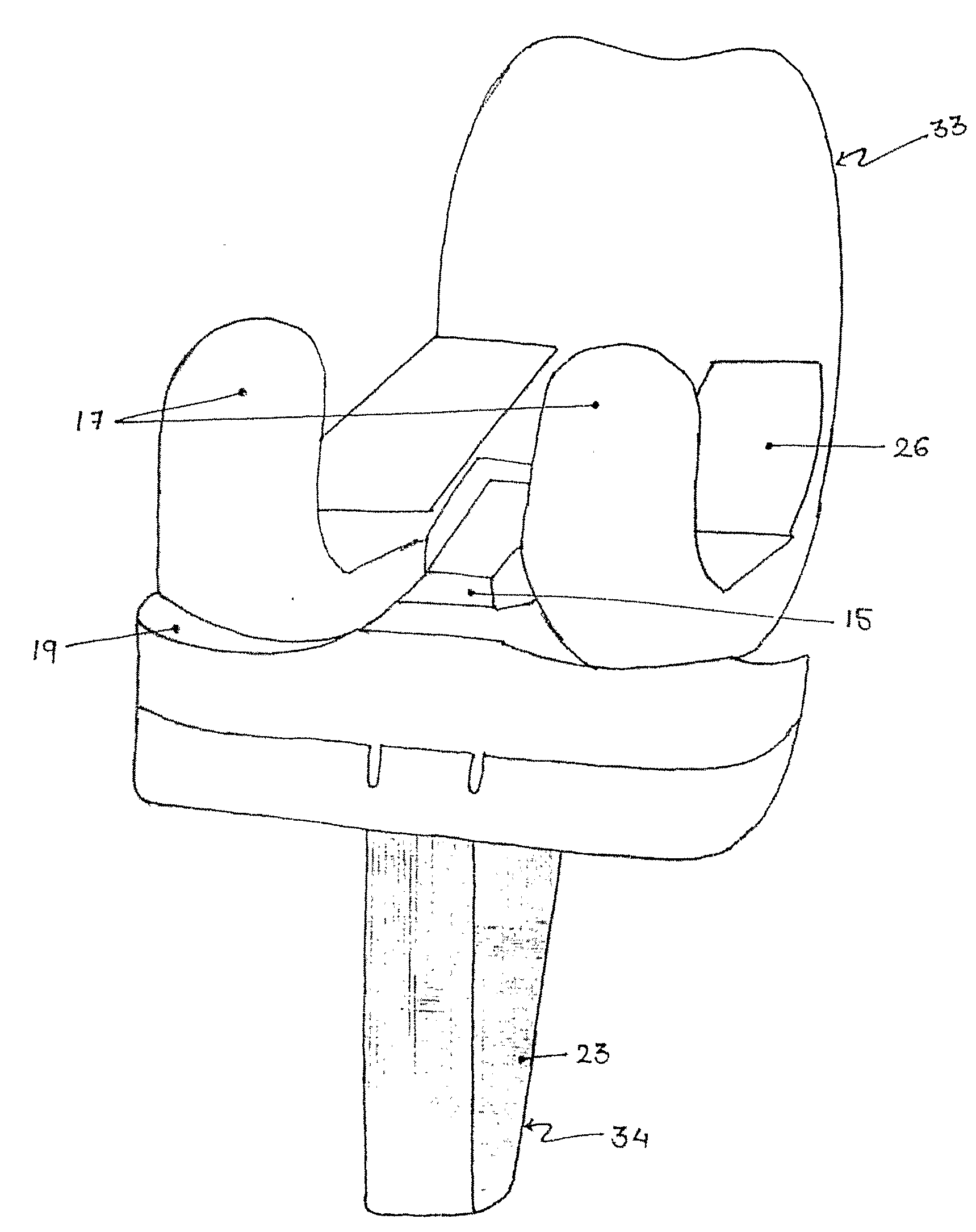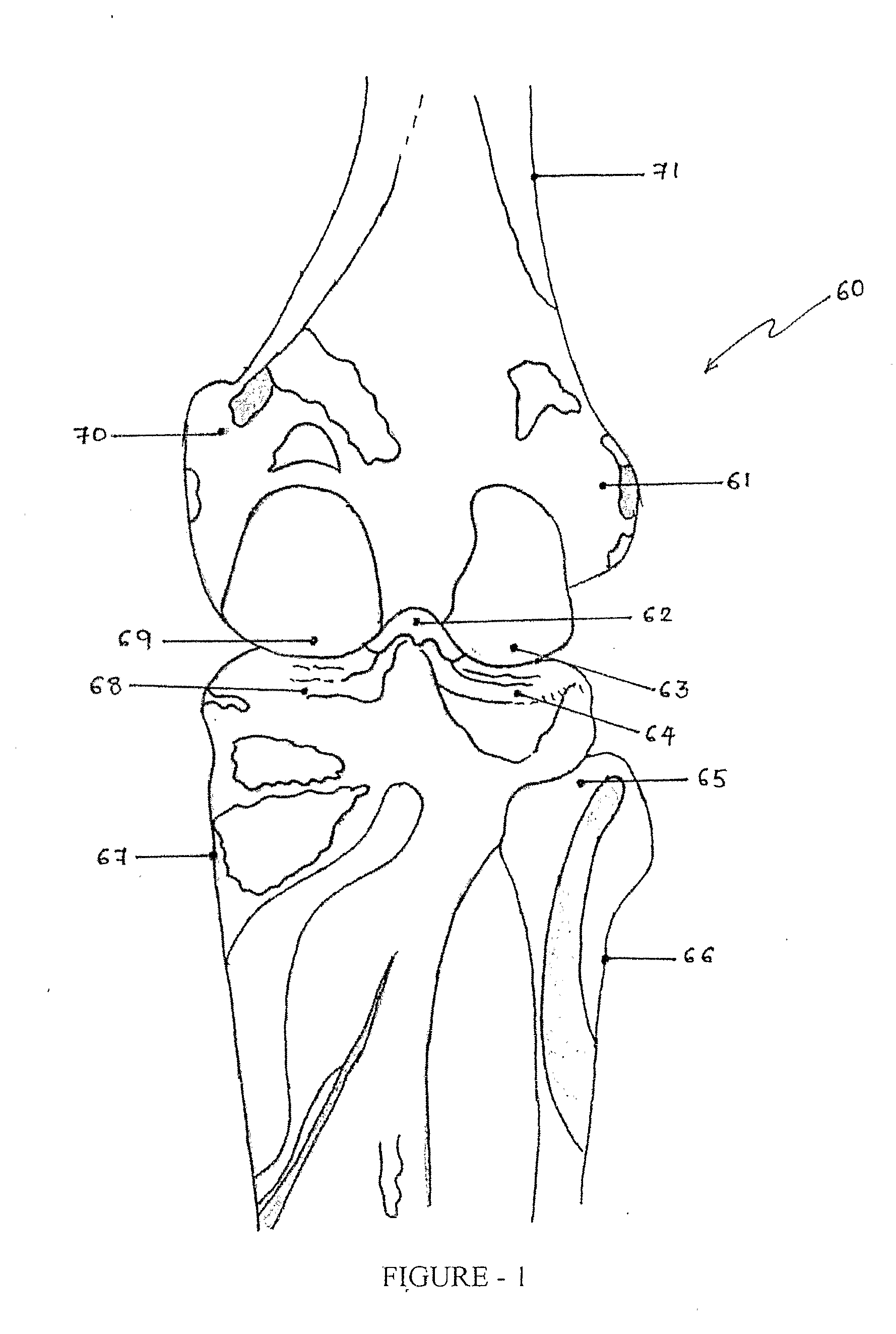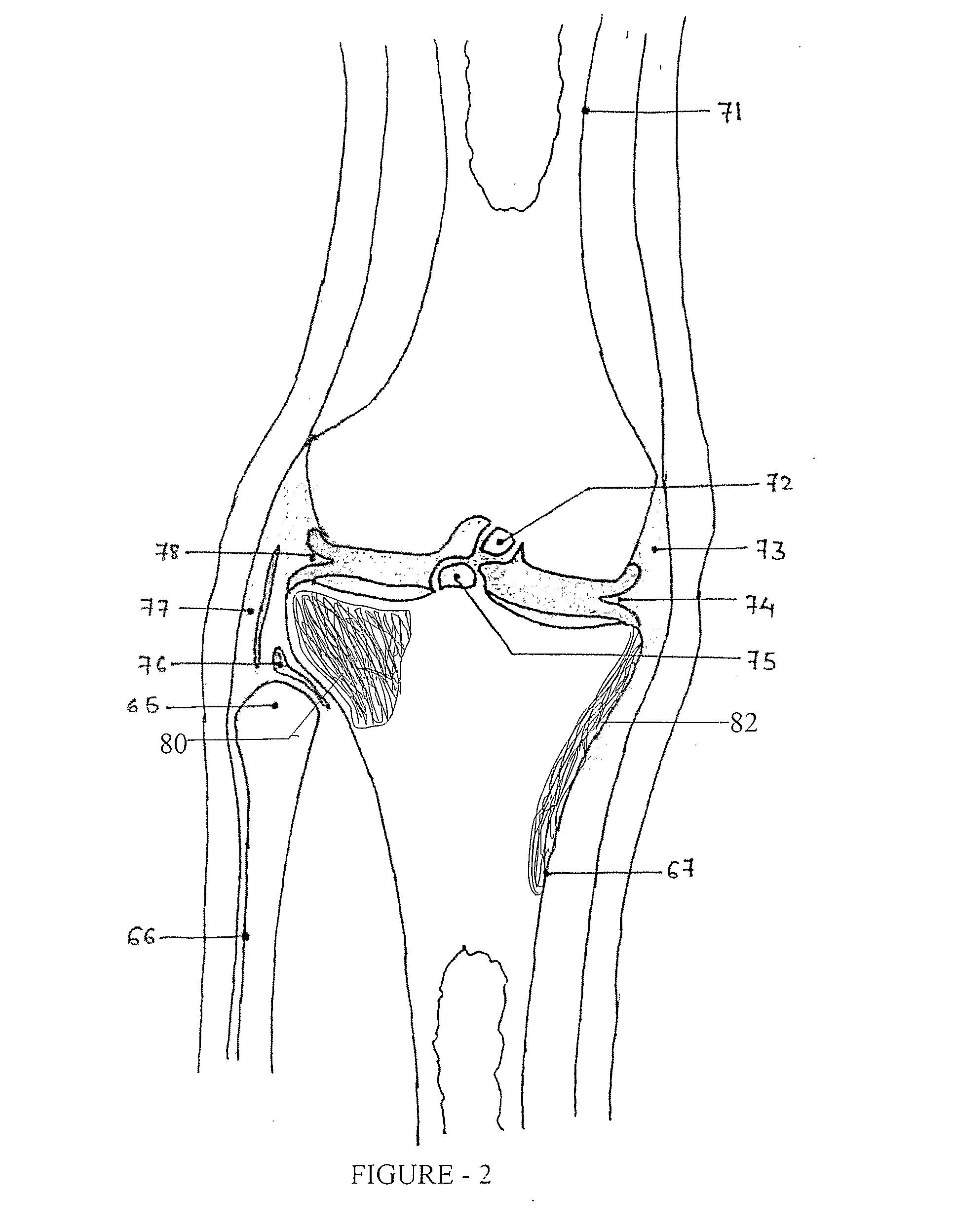Knee Joint Prosthesis
a knee joint and prosthesis technology, applied in the field of knee joint prosthesis, can solve the problems of inability to move (hyperextension), lack of inherent stability of the knee joint, and decreased shallowness of the tibial plateau
- Summary
- Abstract
- Description
- Claims
- Application Information
AI Technical Summary
Benefits of technology
Problems solved by technology
Method used
Image
Examples
case 1
[0118]A 58 year old female patient presented herself with severe pain in the right knee an inability to carry activities of daily living with deformity in her right knee, Patient had undergone total knee replacement surgery for her left knee using conventional indigenous knee prosthesis. The right knee was operated for TKR using the prosthesis of this invention. The surgical procedure was performed under spinal and epidural anesthesia in supine position using tourniquet and side and distal posts. An anterior midline incision was taken. Medial capsulotomy was performed after capsular marking using a sharp scalpel. The Patella was everted and locked in the everted position and resurfaced. The femoral and tibial osteophytes were removed to obtain a better anatomical shape of the femoral and tibial condyles. Medial peritibial release was done for ligament balancing. Femoral and tibial cuts were taken followed by sizing for the prosthetic components. Medium plus femoral component and med...
PUM
 Login to View More
Login to View More Abstract
Description
Claims
Application Information
 Login to View More
Login to View More - R&D
- Intellectual Property
- Life Sciences
- Materials
- Tech Scout
- Unparalleled Data Quality
- Higher Quality Content
- 60% Fewer Hallucinations
Browse by: Latest US Patents, China's latest patents, Technical Efficacy Thesaurus, Application Domain, Technology Topic, Popular Technical Reports.
© 2025 PatSnap. All rights reserved.Legal|Privacy policy|Modern Slavery Act Transparency Statement|Sitemap|About US| Contact US: help@patsnap.com



